We work so hard during the summer to keep a sizable garden and have our own fresh produce. When growing my own crops, the growing season quickly becomes the harvesting season. Before long, I have a surplus of vegetables that I want to last through autumn and winter.
Instead of freezing my veggies, or keeping them in a root cellar, our family has always stored our surplus crops in sand. Our home-grown root vegetables, such as carrots, parsnips, turnips, beets, rutabaga, onions, ginger, and radishes are buried year after year to preserve them. We also store apples and pears this way. Just be sure to store apples and vegetables in separate containers, due to the ethylene emission from apples.
Root veggies are also safe to keep in the ground as the temperature cools. After the first frost is typically when I wait to harvest. Be careful through; the longer you wait, the easier it is for rodents and bugs to infiltrate your crop.
I have found that a sand method of preservation is the freshest, most natural way of keeping my hard work in the garden paying off during the cold months. Preserving your crops in sand also offers the following:
- Inexpensive storage
- Crops stay fresher, longer
- Easy to make and maintain
Every prepper has their way of storing their vegetables in sand, but I wanted to share my method of storage. Our family sand-storage secrets have been passed down through generations, and it’s important to stick with what works for you. There are a few considerations that are non-negotiable in my sand preservation.
Temperature
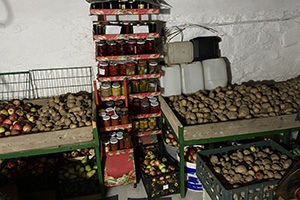 Root vegetables need the right temperature with the right moisture levels to keep well.
Root vegetables need the right temperature with the right moisture levels to keep well.
The ideal preservation temperature is anywhere between 32 to 40 degrees, with humidity at about 95 percent. Any colder and the veggies will freeze; any warmer and they will grow.
Container
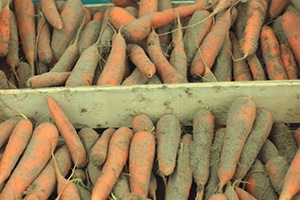 I use an insulated box that I made myself, which is just a large wood box inside a larger wood box. The larger box’s gap between the sand box is filled with straw, acting as insulation. You can also use sheet insulation inside a corner of your shed or garage for temperature control, as long as the structure is rodent-proof.
I use an insulated box that I made myself, which is just a large wood box inside a larger wood box. The larger box’s gap between the sand box is filled with straw, acting as insulation. You can also use sheet insulation inside a corner of your shed or garage for temperature control, as long as the structure is rodent-proof.
Rodents and bugs are a huge threat to your preservation.
If you are new to this method, your crisper drawer can be used as a last-minute solution to preserve your vegetables in sand. Take this into account and prepare for next year by planning a more permanent solution.
Location
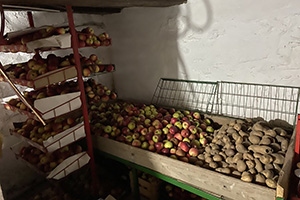 I keep my sand storage in my basement in a well-insulated room, ensuring the temperature is within that sweet spot consistently through winter.
I keep my sand storage in my basement in a well-insulated room, ensuring the temperature is within that sweet spot consistently through winter.
I keep this room unheated and enclosed to keep moisture and humidity consistent.
If you do not have storage available in your basement, a corner of your shed or garage can be used. Be sure to insulate with sheet insulation to make sure the temperature does not go below freezing. Some sheds and garages can act as hot boxes, even in the winter sun, so be mindful of your location choice.
Sand Type
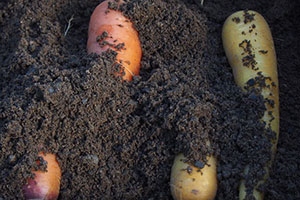 For years, my family has always consistently used “play” sand for storing, which is sand that is washed, screened, and dried. It is the safest type of sand to use around your food.
For years, my family has always consistently used “play” sand for storing, which is sand that is washed, screened, and dried. It is the safest type of sand to use around your food.
Typically, you will find play sand in children’s sandboxes and playgrounds.
I buy my sand in 50-pound bags at the garden surplus store. Upon purchasing, the sand is moist. If you find that your sand is not moist enough, spray lightly with a spray bottle and aerate the sand with your fingers. Do this before packing up any vegetables.
Sand Storage Procedure
- First, I remove all leafy tops and greens from my root vegetables, avoiding cutting off any vegetable flesh. I do not wash my vegetables prior to storage, but you can knock off some dirt and grit from the flesh and roots.
- You want to select the best crops from your harvest for storing. Mature, but not overripe veggies with unblemished surfaces are key.
- Pour several inches of sand evenly into the bottom of your box. Nestle your produce into the first sand layer, and then continue layering sand and veggies, like a preserved vegetable lasagna. The sand must cover all veggies, and allow a few inches between each one. The veggies should not be touching.
In three simple steps, you have fresh produce from your own garden throughout all of winter. Some other helpful tips I’ve picked up over the years are:
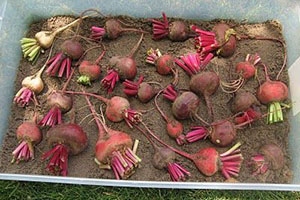 Harvest your veggies initially from the garden on a dry day. Leave them out in the sun with the roots exposed for a few hours to harden the outer skin.
Harvest your veggies initially from the garden on a dry day. Leave them out in the sun with the roots exposed for a few hours to harden the outer skin.- Be sure to check your veggies once every week once planted in the sand. It is scary how quick rot can spread through your crops, so be sure to look at them and smell them often.
- Store veggies such as carrots and parsnips in the same way they grow in the ground, roots facing down.
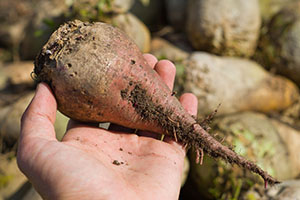 Be sure the roots on your veggies are supple before storing. Too wet of roots will cause rot, and too dry of roots will shrivel.
Be sure the roots on your veggies are supple before storing. Too wet of roots will cause rot, and too dry of roots will shrivel.- Eat your crops before any sign of rot happens. These crops are only meant to last you through the winter, anywhere from two to five months.
Keeping a large garden in the summer is the best way to ensure our families have enough to eat, since society is not stable enough these days to rely on. Once summer is over and you have a farmer’s market worth of produce to keep, it is time to get crafty in your storage solutions.
Storing vegetables using sand is not a new way of storage, but it is an efficient way. It retains the vitamins and minerals your family needs to survive, as opposed to freezing or canning.
Having a nice, fresh carrot in the dead of winter that you did not have to buy at the store is a rewarding feeling as a prepper, but also as a person who provides healthy food for their family.
You may also like:
 How To Preserve Food With Duct Tape And Bentonite Clay
How To Preserve Food With Duct Tape And Bentonite Clay
10 Medicinal Plants You Should Never Plant Together (Video)
The Easy and Practical DIY Snares to Catch Small Wild Game
Puerto Rico: This Is What Living in a 6 Month-Blackout Looks Like

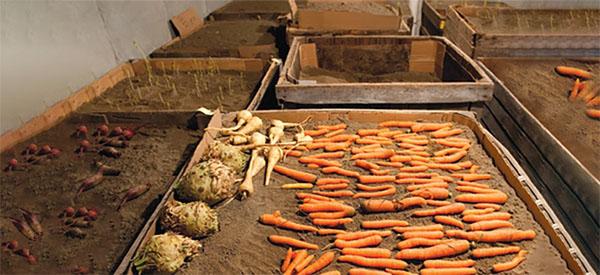









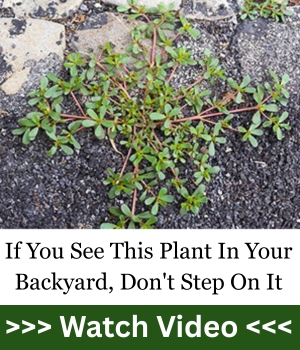

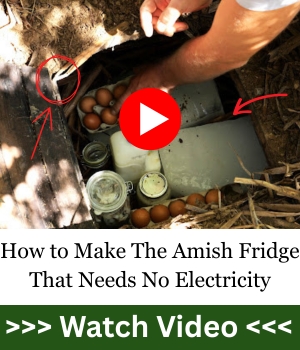








Are these books hard copies or are they e- books?
Interesting way to store veggies. Seems appropriate for root vegetables. I used to store unripe but nature end of season tomatoes individually wrapped in newspaper. In boxes in a cool place. They would keep most of the winter. For now i don’t have a x root c Eldar or basement so I use an old thick walled portable freezer built like a slide in camper. It works well. Cold but no freezing. Not running the unit. Just passive winter storage sitting on a small trailer built just for it.
But I sure encourage storing home grown produce how ever you can.
very cool, thank you!
how can you store in southern Florida?
I have the same question? I live in Titusville, 200 miles north of the Miami area. Our ground water from 10 feet down is normally 72 degrees. We need another option? Probably canning would be the best. That’s what all my family has done.
For the extra kale and greens I have, I dehydrate them so I can blitz them up for a greens powder. Greens powder at the store is about $15 for 8oz. That’s too much. So I make my own. And I did hear about storing root vegetables in damp sand for preservation.
This method is used in Brittany, France; especially for carrots. Carrots are sold with sand adhering to their skins. I prefer to buy the sandy carrots, as they have taste, cook well, good to handle – no argument against/to ‘sandy carrots’.
As is shown, we did this type of storage for root foods when I was growing up in the 60s. I did it myself farming the family farm in the 70s. It works. — thanks for the article
you also storing potatoes this way? >>> ever buy clean & processed veggies from the grocery and try storing them???
Good article for sure, but the accompanying photos don’t do it justice. We use to use shallow wood crates that have plenty of air circulation, kind of like the old Apple/peach baskets, and stack them up on racks in the root cellar. Each piece of fruit or vegetable was neatly placed and spaced out separately in an orderly pattern in the crate so that they could be checked every so often.
It sounds good, but we live in Arizona. Our thing is preserving the harvest thru summer. By fall, the garden is getting loaded with produce, so we’re good all winter. Right now, a few tomatoes survived the frosts, and there are still chilis coming on in potted plants, as well as eggplants. A lot of sweet potatoes are still in the ground and can stay till about March. niio
I lived in an area that had sandy soil, and it worked great in a cellar for this type of storage. I always got fresh sand each year. Can the play sand be used again, or is there too much chance of left over problems from the prior year? Thank you for the article.
My great uncle used to do this with his veggies. I never paid attention then, but now will be doing this myself. Thanks for the article.
Peace
MadFab
Tracy, I had never heard of this. You explained it very well. Thank you!
does anyone know if this works in fl summers or how to preserve in fl our seasons are backwards
If I am following you on Pinterest, why can’t I save this article to my Pinterest? Would you please allow us to save your articles to Pinterest?
I would prefer the hard copies, if possible. Not very tech savy. Please let me know if you have the physical books. Thank you so much.